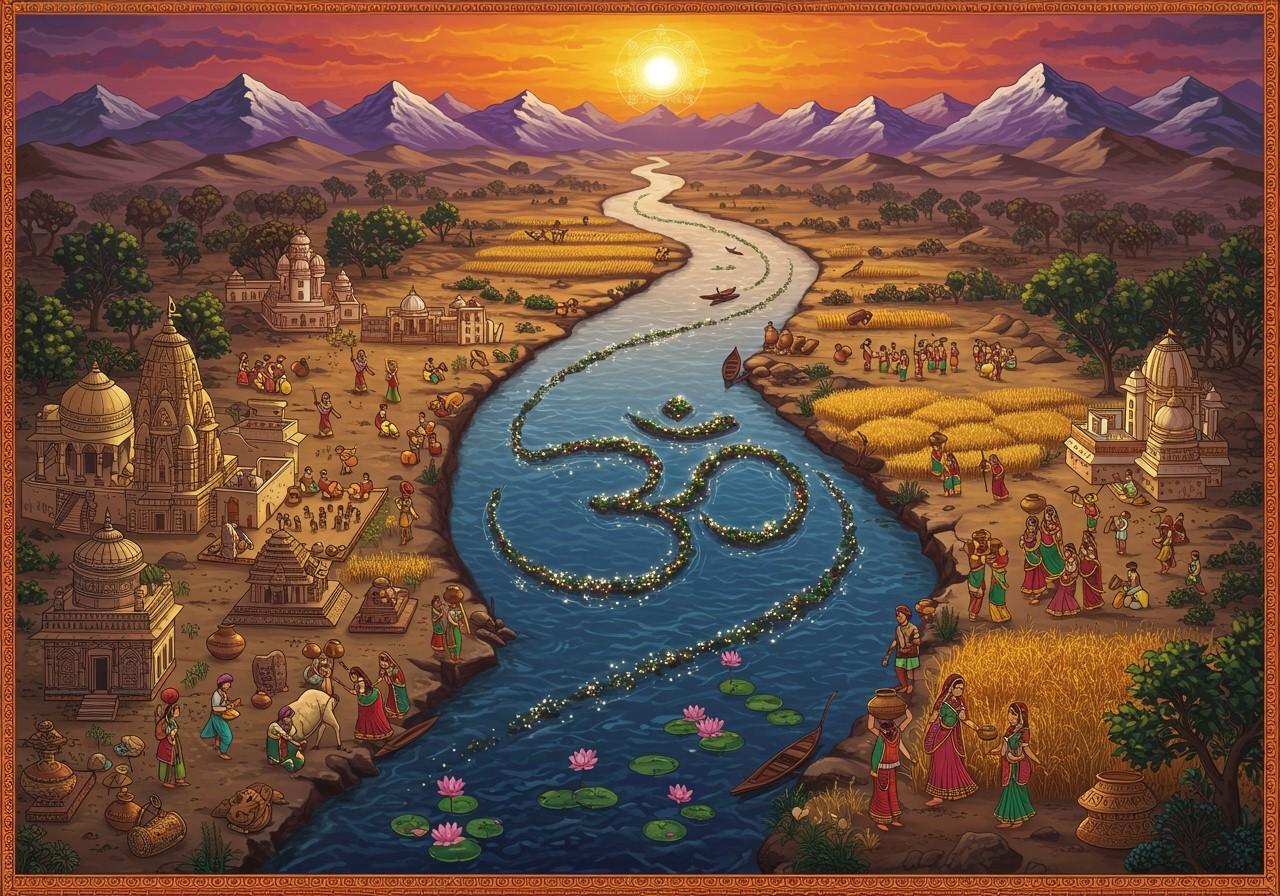
The Indus River System stands as a testament to the passage of time, shaping the lives, traditions, and economies of the regions it traverses. This article delves into the tributaries, length, and profound impact of the Indus River, particularly its role in the rise of the Indus Valley Civilization. From its glacial origins to its final destination in the Arabian Sea, the Indus remains a vital lifeline for millions.
Geographical Overview of the Indus River System
The Indus River’s journey begins in the Tibetan Plateau, near the sacred Lake Mansarovar. It flows through the diverse landscapes of India, including the Ladakh region, before entering Pakistan, where it meanders through Gilgit-Baltistan and the Sindh province, finally reaching the Arabian Sea. Its total length stretches approximately 3,180 kilometers, establishing it as one of the world’s longest rivers. The river basin, encompassing over 1 million square kilometers, nurtures a variety of ecosystems, from high-altitude meadows to arid desert plains.
Major Tributaries of the Indus River
The Indus River is fed by several major tributaries, each contributing to its might and significance:
- Jhelum River: Originating in Jammu and Kashmir, the Jhelum River flows through the picturesque valleys before joining the Indus in Pakistan.
- Chenab River: Formed by the confluence of the Chandra and Bhaga rivers, the Chenab River traverses Jammu and Kashmir and eventually merges with the Indus in Pakistan.
- Ravi River: Born in the Himalayas, the Ravi River courses through the Punjab region before joining the Indus in Pakistan.
- Beas River: Commencing its flow in Himachal Pradesh, the Beas River eventually merges with the Sutlej River, another major tributary of the Indus.
- Sutlej River: The longest tributary of the Indus, the Sutlej River originates in Tibet and flows through both India and Pakistan before joining the Indus.
Historical Significance: The Indus Valley Civilization
The Indus River Valley was the cradle of one of the world’s earliest urban civilizations, flourishing from around 2500 to 1700 BCE. This civilization, known for its advanced urban planning, intricate architecture, and sophisticated systems of weights and measures, left an indelible mark on history. Major cities like Harappa and Mohenjo-daro, renowned for their grid layouts and drainage systems, stand as testaments to the ingenuity of this ancient civilization. The river played a pivotal role in their agriculture, supporting crops like wheat, barley, and cotton. Furthermore, the river facilitated trade routes, connecting the Indus Valley Civilization with other ancient cultures.
Explore artifacts and learn more about the spiritual heritage of ancient civilizations with our curated collection of Lord Shiva Murtis.
Cultural and Economic Importance
The Indus River continues to hold immense cultural and economic significance for the regions it nourishes. In India, it is revered as a sacred river, playing a central role in rituals and festivals. The river’s waters irrigate vast agricultural lands, particularly in the Punjab and Sindh provinces, supporting the cultivation of essential crops like rice, sugarcane, and a variety of fruits. The river also sustains thriving fisheries, providing livelihoods for countless communities. Furthermore, hydropower projects harness the river’s energy, generating electricity for both India and Pakistan.
Environmental Challenges and Conservation Efforts
The Indus River faces numerous environmental challenges, including pollution from industrial and agricultural activities, over-extraction of water for irrigation, and the looming threat of climate change. These challenges necessitate collaborative efforts to ensure the river’s health and the well-being of the communities that depend on it. Cross-border water management agreements, such as the Indus Waters Treaty, are crucial for equitable water sharing and conflict resolution. Conservation initiatives aim to protect the river’s biodiversity and promote sustainable water use practices.
Enhance your spiritual practices with authentic puja items from Poojn.in. We offer a wide range of camphor, deities, and other essential items for your spiritual journey. Visit Poojn.in today.


